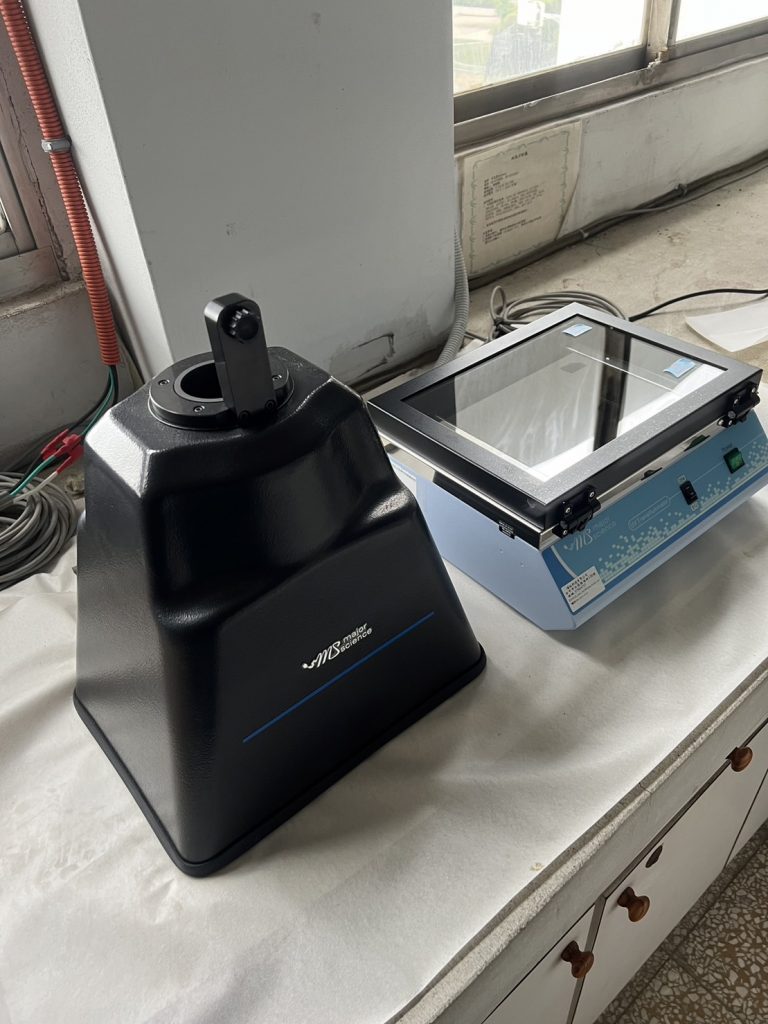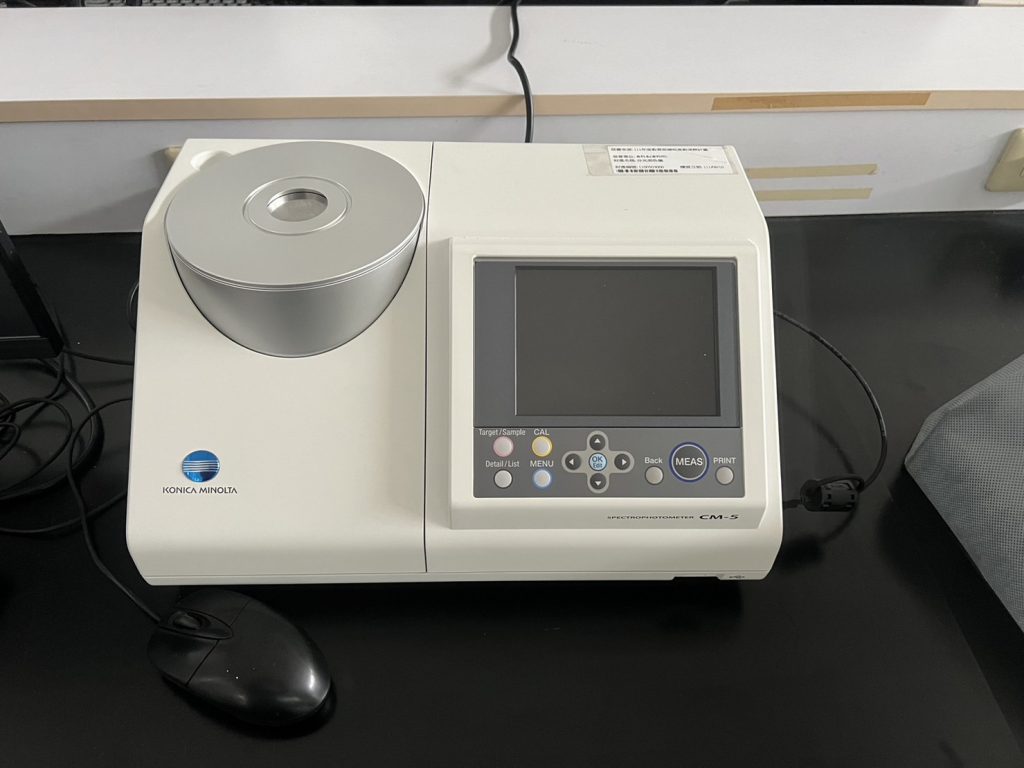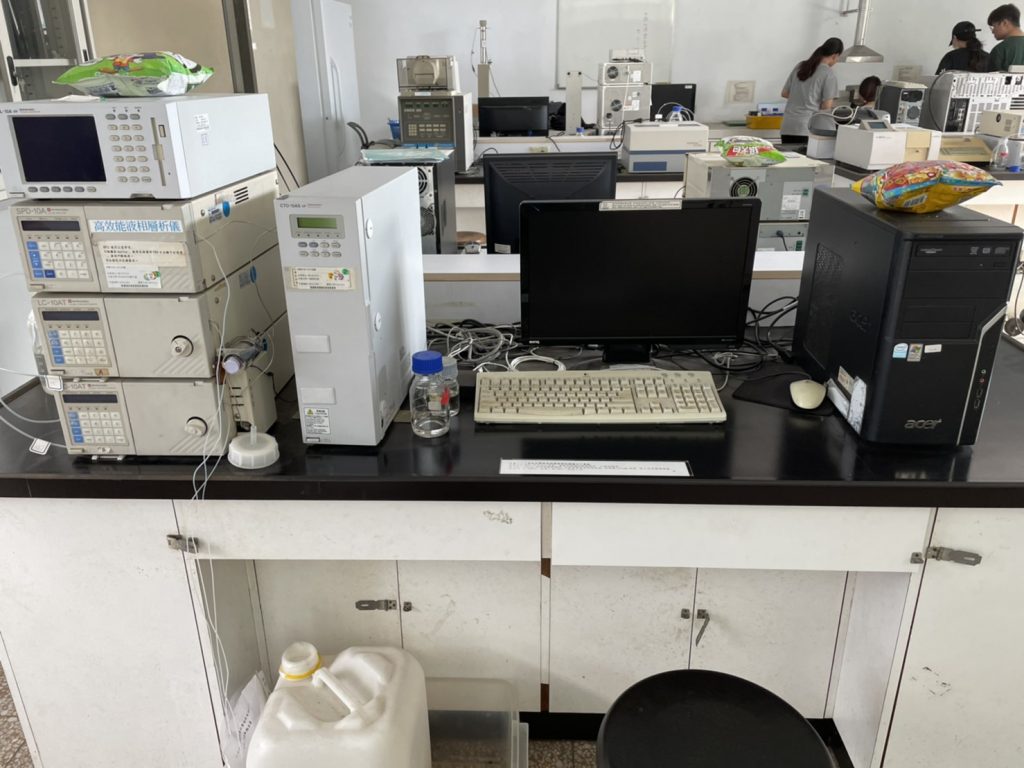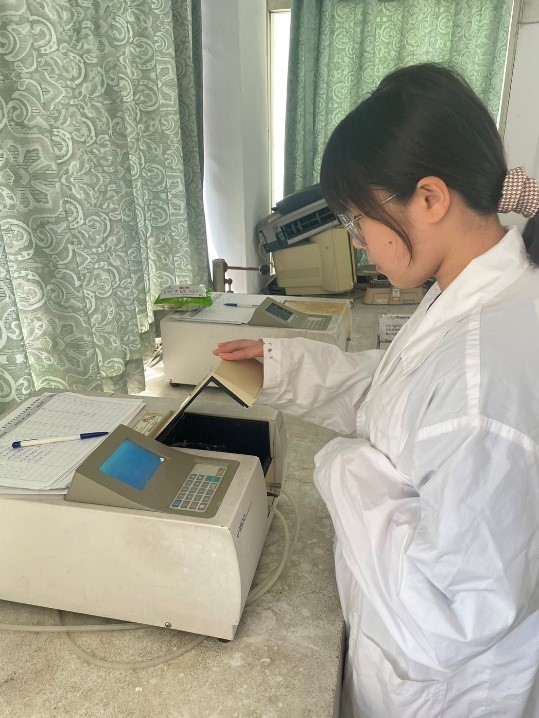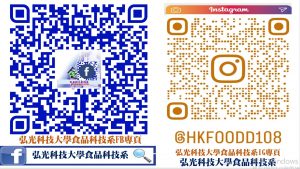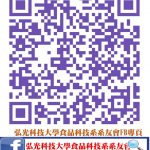
Name:Department Instrument RoomⅡ(D206)
Equipment:D20600
Teachers in charge:Lo, Wan-Yu
Equipment::
In classes in the Department of Food Science and Technology, students will learn food-related scientific principles and technical applications, as well as corresponding experimental skills, which will help them become future professionals in the food industry.
First, students will learn the use of infrared spectroscopy, which is important for analyzing food composition and structure. They can use infrared spectrometers to measure edible oils, fats, dairy products, red wine, etc. to confirm quality and composition identification, and to further understand the chemical structure and characteristics of food.Second, students will measure using a colorimeter. A colorimeter is an instrument used to determine or specify color. A colorimeter can determine the concentration of a substance in a solution based on the intensity of its color. If you are testing a colorless solution, add a reagent that reacts with the substance and produces color. This colorimeter has a wide range of applications, including laboratory research, water quality environmental analysis, soil composition analysis, monitoring of hemoglobin levels in blood, and analysis of chemicals used in various industrial environments.Students will learn how to use differential collectors to separate and purify samples for subsequent analysis and testing. Polarimeters are used to measure the optical rotation of optically active substances in foods, such as sucrose and glucose. Through the use of a polarimeter, students can obtain optical rotation data of food samples to understand their optical properties and chemical structure.The tissue measuring device can be used to determine the tissue structure and texture characteristics of food, such as observing the pore structure and fiber arrangement in food. Through the tissue measuring device, students can conduct quantitative analysis and discussion on the tissue characteristics of food.Supercritical fluid extraction device is an efficient extraction technology for extracting active ingredients in food. Through the supercritical fluid extraction device, it can be used for decaffeination of tea and coffee beans; defatting of food; extraction of plant pigments; extraction of plant and animal oils. Students can extract food samples to obtain high-purity and high-efficiency extraction products.Hematology analyzers can be used to measure the heme content in foods, which is critical for quality testing of certain meats and foods of animal origin.The high-performance liquid chromatography (HPLC) is characterized by the utilization of high-pressure liquid pumps, highly sensitive detectors, and efficient micro-particle stationary phases, enabling the separation, qualitative identification, and quantitative analysis of components in liquid mixtures. It is suitable for analyzing organic compounds with high boiling points, large molecular weights, and different polarities. For example, it can detect and analyze the content of melamine in food.Gas chromatography mass spectrometry (GCMS) can analyze these compounds, such as: esters, fatty acids, alcohols, aldehydes, terpenes, etc. GC-MS is also used to determine contaminants due to spoilage and adulteration that may be harmful, such as pesticidesUV-visible spectrophotometers can be used to determine the concentration of chemical components in foods, such as proteins, sugars and fats.Capillary Electrophoresis (CE) is a technique used for the separation and analysis of biomolecules, commonly applied in the analysis of genetic, protein, nucleic acid, pharmaceutical, and carbohydrate samples. It finds extensive applications in various fields including life sciences research, clinical diagnostics, drug development, and environmental monitoring.The utilization of a DNA photodocumentation system involves a range of techniques such as gel electrophoresis, DNA labeling, image capture and analysis, UV exposure safety, and data interpretation and reporting.
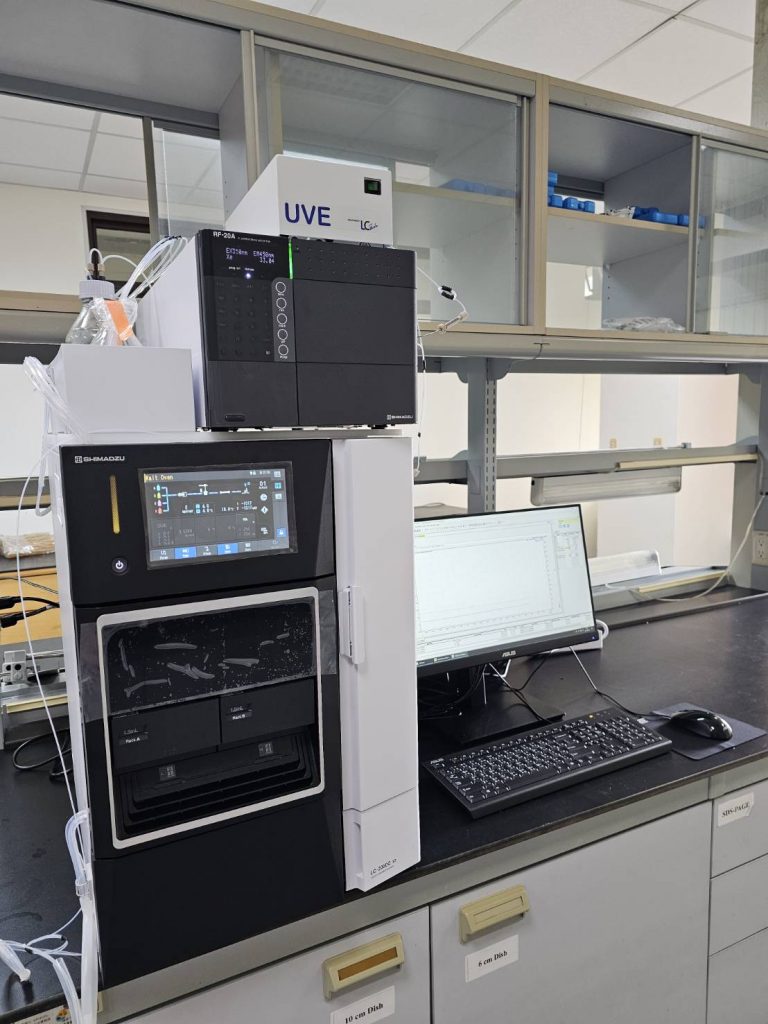 high-performance liquid
high-performance liquid
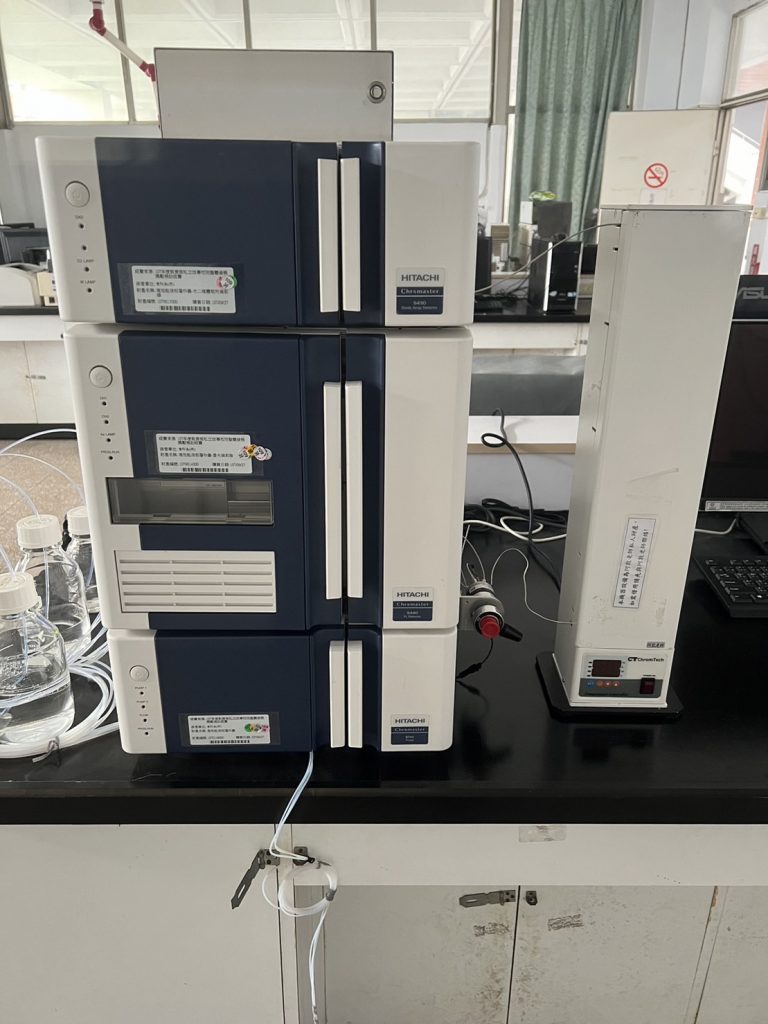 high-performance liquid
high-performance liquid
